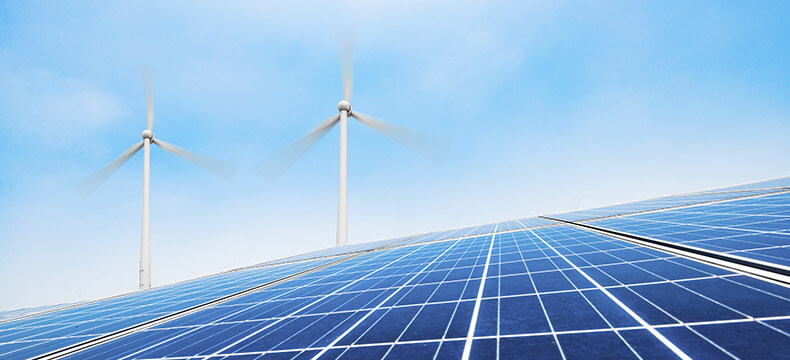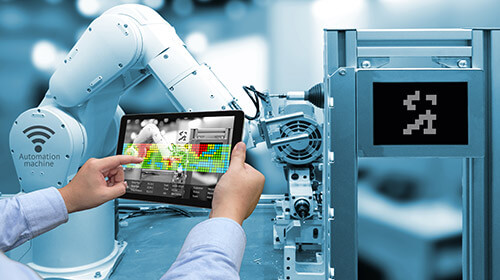- Renewable Energy: Solar, Wind, Hydro, Wave & Geothermal Power.
- Infrastructure: Smart Grids and Energy Distribution Networks.
- Transportation: Electric Vehicles (EVs) & Autonomous Vehicles.
- Consumer/Industrial: LED Lighting & GPS Technology.
Non-Negotiable Features of High-Power PCBs
- Advanced Thermal Management
- Robust Materials
- High-Density Interconnect (HDI)
- Reliable Data Transmission
- Power & Voltage Handling
Advanced Thermal Management: Applications such as RF modules, power supplies, LED lighting systems, motor controllers and sophisticated computing platforms impose thermal loads that must be carefully managed during the design phase. Effective heat dissipation in PCBs requires a multidisciplinary approach, combining materials science, mechanical and electrical engineering, plus precision PCB manufacturing technologies to effectively dissipate heat from components. Options Include:
- Thick Copper Layers: Using 2 oz. (70 μm) or heavier copper layers increases the thermal mass and provides a lower thermal resistance (θJA), acting as a heat dissipater.
- Thermal Vias: Plated through-holes placed under or near heat sources to conduct heat directly from component solder pad through the PCB layers to a heat sink or heat-spreading plane; increasing the effective k (thermal conductivity) of the stack-up.
- Metal Core PCBs (MCPCB) or Embedded Metal: Using materials like aluminum or copper as the core substrate or embedding copper coins/plugs serving as highly conductive heat spreaders.
- Heat Sinks & Fans: Integrated mechanical solutions for forced or passive convection cooling.
Robust Materials: Materials with high thermal stability, high dielectric strength and appropriate thermal expansion characteristics. Options Include:
- High Glass Transition Temperature (Tg): Using laminate materials with a high Tg >170∘C, prevents substrate material from softening, delaminating or exhibiting dimensional instability at high operating temperatures.
- Low Coefficient of Thermal Expansion (CTE): Materials with a low CTE (especially in Z-axis) minimize mechanical stress on plated through-holes (vias) during thermal cycling, preventing barrel cracking and ensuring connection integrity.
- High Comparative Tracking Index (CTI): The CTI must be high (CTI≥400V) to prevent the formation of conductive carbon pathways (tracking) across the surface of the insulator material under electrical stress and contamination; leading to short circuits.
High-Density Interconnect (HDI): For control and signal processing sections of a high-power system to manage the complexity and miniaturization required for modern designs. To increase component density, reduce overall board size / weight and improve electrical performance through shorter signal paths. Options Include:
- Micro-vias: Extremely small laser-drilled vias (typically ≤150μm) used for layer-to-layer connections. Generally blind (connecting an outer layer to an inner layer) or buried (connecting two inner layers).
- Staggered & Stacked Micro-vias: Techniques for connecting multiple layers with micro-vias, offering more routing channels than traditional through-vias.
- Fine Pitch Components: HDI facilitates the use of advanced, high-pin-count integrated circuits (ICs) with fine pitch Ball Grid Arrays (BGAs) and Quad Flat No-Lead (QFN) packages by providing the necessary fine routing resolution and capture pad size.
Reliable Data Transmission: Minimizing signal degradation (attenuation, reflection, crosstalk) to ensure control logic and communication protocols function properly. Implementation:
- Controlled Impedance: Traces carrying high-speed or RF signals are designed with specific dimensions and separated from a reference plane by a precise dielectric thickness to maintain a characteristic impedance (Z0) (50 Ω for single-ended, 100 Ω for differential pairs). This prevents signal reflections.
- Differential Signaling: Using a pair of traces (differential pair) to transmit a signal and its inverse. This configuration improves Common-Mode Noise Rejection (CMNR) and reduces Electromagnetic Interference (EMI) by coupling the noise equally onto both lines, which is then canceled out at the receiver.
- Low-Loss Dielectrics: Utilizing materials with a low Dissipation Factor (Df) and a stable Dielectric Constant (ϵr) over frequency (PTFE or specialized epoxy resins) to minimize signal loss (attenuation) at high data rates.
Power & Voltage Handling:
Managing high currents and high potential differences without breakdown or excessive heat generation. Ensures current carrying capacity is sufficient, voltage clearances are maintained and resistive power loss (P=I2R) is minimized. Implementation:
- Current Carrying Capacity: Traces are dimensioned (width and copper thickness) based on the IPC-2152 standard to ensure the temperature rise (ΔT) due to I2R heating is within acceptable limits. Wider and thicker traces are used for high current paths.
- Creepage & Clearance:
- Clearance is the shortest distance through air between two conductors, preventing arcing at high potential differences.
- Creepage is the shortest distance along the surface of the insulator between two conductors, preventing surface flashover or tracking. Both are dictated by the system’s operating voltage, pollution degree and material CTI.
- Power Planes: Typically thick, copper layers used for distributing high currents and maintaining low DC resistance (RDC) and low inductance (L) across the board. They also function as effective thermal and EMI shields.
Advanced Miniaturization Solutions in High Power PCBs
Organic Package Substrates & Advanced IC Packaging Solutions are essential in the design and fabrication of High Power PCBs, primarily by addressing the critical challenges of thermal management, power delivery and miniaturization. These key components act as a high-performance, high-density intermediary; bridging the gap between the ultra-fine features of a modern IC (Chip) and the coarser features of the main PCB (Board).
Role of Organic Package Substrates:
An organic package substrate is a high-end Printed Circuit Board in itself, often made of materials like Bismaleimide Triazine (BT) resin or Ajinomoto Build-up Film (ABF). Its key roles in high-power applications include:
1. Enhanced Thermal Management
- Heat Dissipation Pathway: While organic materials typically have lower intrinsic thermal conductivity than ceramic, high-power organic substrates are engineered with features like internal copper planes and thermal vias to efficiently spread and conduct heat away from the IC’s silicon die. This is crucial for preventing component overheating and subsequent performance degradation or failure in high-power devices.
- Coefficient of Thermal Expansion (CTE) Matching: Advanced organic substrates can be designed with a low CTE that closely matches the silicon die. This reduces thermal stress on the solder joints (in Ball Grid Arrays, or BGAs) during power-up/power-down cycles and high-temperature operation, significantly improving the long-term reliability of the high-power assembly.
2. High-Density Interconnect (HDI) and Miniaturization
- Scaling Down: They feature much finer line widths and spacing (1/1 mil or less) and smaller micro-vias compared to standard PCBs. This allows for a massive number of connections (high I/O density) to fan out from the small IC die to the larger PCB, enabling the use of powerful, compact chips.
- Build-up Technology: Organic substrates often utilize sequential Build-Up (BU) processing with materials like ABF, which facilitates the fine-pitch wiring and multi-layer structure necessary for advanced IC packages like BGAs.
3. Electrical Performance
- Signal and Power Integrity: They use low-loss dielectric materials (like BT resin) to maintain signal integrity for high-speed digital and RF signals, and their structure allows for low-inductance power delivery paths, which is vital for the stable, high-current power required by modern high-performance processors and power electronics.
Role of Advanced IC Packaging:
Advanced IC packaging solutions, which often rely on these organic substrates, are the mechanism for realizing the benefits on the high-power PCB. They include architectures like Flip-Chip BGA (FCBGA), System-in-Package (SiP), and Multi-Chip Module (MCM).
1. High-Current Power Delivery
- Reduced Inductance: Advanced packages like Flip-Chip (where the die is inverted and connected via solder bumps) on a substrate significantly reduce the length of the electrical path compared to traditional wire bonding. This minimizes parasitic inductance, which is critical for high-current power switching components (MOSFETs, GaN, SiC devices) where rapid switching can generate destructive voltage spikes (V=LdtdI).
- Power Distribution Network (PDN) Optimization: The substrate is designed with dedicated power and ground planes right beneath the IC to ensure a stable, low-impedance power source, a fundamental requirement for high-power chips.
2. High-Performance Integration
- System-in-Package (SiP) and MCM: These solutions integrate multiple components (ICs, passives, memory) into a single module on the substrate. For high-power systems, this integration reduces the overall footprint and shortens the distance between power management circuitry and the load, which boosts power efficiency and improves transient response.
- Vertical Stacking (3D Integration): Die stacking allows for a greater power density in a smaller area, further pushing the need for the substrate to handle the concentrated heat and power flow effectively.
3. Mechanical and Environmental Protection
- Mechanical Support: The package substrate provides a stable and robust platform that protects the fragile silicon die from mechanical stress (vibration, shock) during assembly and operation.
- Encapsulation: The entire advanced package protects the IC and its connections from environmental factors like moisture and dust, ensuring the long-term reliability demanded by high-power, industrial, or automotive applications.
What’s Next?
PCB Technologies is with you every step of the way, from initial PCB design, through fabrication, to full system integration. We bring to the table seasoned engineers with cutting-edge know-how, advanced PCB manufacturing processes and our dedicated iNPACK Division for expert miniaturization and IC packaging capabilities.
We’re also an All-in-One Solutions provider, ensuring a speedy transition from prototype to low/mid production volumes all under one roof. In this way, we keep a watchful eye on quality, cost and timelines, while you avoid the uncertainties of jobbing out to external vendors.
Let’s talk about how you can leverage our expertise.













